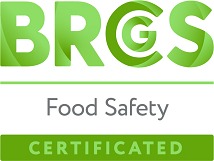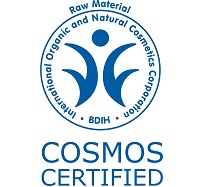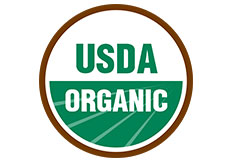

Organic Pro Vitamin A Powder
The indiscriminately use of fertilizers and pesticides in agriculture can have severe impact on human health ranging from toxicity and deadly diseases. We at ARYAN, are committed to address this challenge by working towards the organic food which uses herbal plants based extracts and adopts phytoremediation for removal of hazardous substances and toxic metals. For last two decades, our group has been involved in the production of Organic botanical extracts, organic essential oils, organic edible oil, organic spices, organic starch, organic flours, organic seeds. Now we are focusing on organic minerals and organic vitamins. By now ARYAN has carved a niche for itself in the field of ORGANIC FOODS and is continuously moving in leaps and bounds. Taking a leaf out of this growth, we intend to start the production of our “Organic Vitamin-A”. Our vitamin is purely organic and does not use any chemical compounds. Unlike other organic Vitamin-A available in the market, ours is totally “Gluten Free”. We have already developed the organic vitamin A and shortly file the patent so that commercial production can star in near future.
Functioning in the Body
- Vitamin A is the name of a group of fat-soluble retinoids, including retinol, retinal, and retinyl esters. Vitamin A is involved in immune function, vision, reproduction, and cellular communication.
- Vitamin A is critical for vision as an essential component of rhodopsin, a protein that absorbs light in the retinal receptors, and because it supports the normal differentiation and functioning of the conjunctival membranes and cornea. Vitamin A also supports cell growth and differentiation, playing a critical role in the normal formation and maintenance of the heart, lungs, kidneys, and other organs.
- Two forms of vitamin A are available in the human diet: preformed vitamin A (retinoland its esterified form, retinyl ester) and provitamin A carotenoids . Preformed vitamin A is found in foods from animal sources, including dairy products, fish, and meat (especially liver). By far the most important provitamin A carotenoid is betacarotene; other provitamin A carotenoids are alpha-carotene and beta-cryptoxanthin.
- The body converts these plant pigments into vitamin A. Both provitamin A and preformed vitamin A must be metabolized intracellularly to retinal and retinoic acid, the active forms of vitamin A, to support the vitamin’s important biological functions.
Food sources for Vitamin A
Vitamin A is found naturally in many foods and is added to some foods, such as milk and cereal. You can get recommended amounts of vitamin A by eating a variety of foods, including the following:Green leafy vegetables and other green, orange, and yellow vegetables, such as broccoli, carrots, and squash.Fruits, including cantaloupe, apricots, and mangos.
Recommended Dietary Allowances
The recommended dietary allowances for Vitamin D (Food and Nutrition Board) in both International Units (IUs) and micrograms.
Recommended Dietary Allowances for Vitamin C
| Age | Male | Female | Pregnancy | Lactation |
| 0–6 months* | 400 mcg RAE | 400 mcg RAE | ||
| 7–12 months* | 500 mcg RAE | 500 mcg RAE | ||
| 1–3 years | 300 mcg RAE | 300 mcg RAE | ||
| 4–8 years | 400 mcg RAE | 400 mcg RAE | ||
| 9–13 years | 600 mcg RAE | 600 mcg RAE | ||
| 14–18 years | 900 mcg RAE | 700 mcg RAE | 750 mcg RAE | 1,200 mcg RAE |
| 19–50 years | 900 mcg RAE | 700 mcg RAE | 770 mcg RAE | 1,300 mcg RAE |
| 51+ years | 900 mcg RAE | 700 mcg RAE |
* Adequate Intake (AI)
Vitamin A Deficiency
According to the World Health Organization, 190 million preschool-aged children and 19.1 million pregnant women around the world have a serum retinol concentration below 0.70 micromoles/L. In these countries, low vitamin A intake is most strongly associated with health consequences during periods of high nutritional demand, such as during infancy, childhood, pregnancy, and lactation.In developing countries, vitamin A deficiency typically begins during infancy, when infants do not receive adequate supplies of colostrum or breast milk. Chronic diarrhea also leads to excessive loss of vitamin A in young children, and vitamin A deficiency increases the risk of diarrhea. The most common symptom of vitamin A deficiency in young children and pregnant women is xerophthalmia. One of the early signs of xerophthalmia is night blindness, or the inability to see in low light or darkness. Vitamin A deficiency is one of the top causes of preventable blindness in children. People with vitamin A deficiency (and, often, xerophthalmia with its characteristic Bitot’s spots) tend to have low iron status, which can lead to anemia. Vitamin A deficiency also increases the severity and mortality risk of infections (particularly diarrhea and measles) even before the onset of xerophthalmia. Vitamin A deficiency can occur in people with protein deficiency, diabetes, over-active thyroid, fever, liver disease, cystic fibrosis, or an inherited disorder called abetalipoproteinemia.
Precaution
Pregnancy and breast-feeding: Vitamin A is LIKELY SAFE for pregnant or breast-feeding women when taken in recommended amounts of less than 10,000 IU per day. Larger amounts are POSSIBLY UNSAFE. Vitamin A can cause birth defects. It is especially important for pregnant women to monitor their intake of vitamin A from all sources during the first three months of pregnancy. Forms of vitamin A are found in several foods including animal products, primarily liver, some fortified breakfast cereals, and dietary supplements.
Search Products
- Organic Botanical Extract
- Organic Cereals
- Organic Edible Oils
- Organic Emulsifiers
- Organic Essentials Oils & Extracts
- Organic Fatty Acids
- Organic Flours
- Organic Formulations
- Organic Herbs
- Organic Minerals
- Organic Nutraceuticals
- Organic Nuts
- Organic Oil Seeds
- Organic Pulses
- Organic Special Products
- Organic Spices
- Organic Starch
- Organic Vitamins










